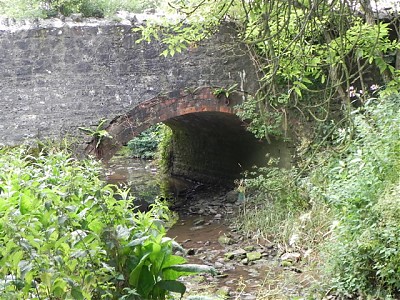Steanbow Bridge
|
|
||||
 |
||||
| Bridge Name: | Steanbow Bridge | |||
| No.: | 38 | |||
| Location: | ||||
| Build Date: | ||||
| Engineer: | ||||
|
© Copyright somersetrivers.org |
||||
| Description: | ||||
| The churchwardens listed other goods travelling by water, such as timber brought in 1458 along what must have been very narrow rhynes from Steanbow bridge at Pilton, 4km to the east of Glastonbury. The goods probably began their journey to Glastonbury at Steanbow for much the same reason as the sea-going ships in Bridgwater, that the bridge was too small to permit further progress. Glastonbury Abbey attempted to control the height of bridges over its waterways but the tiny bow bridges must have posed considerable problems for river users. It seems no coincidence that later bow bridges, for example at Hythe and Clewer in the Axe valley, lay immediately upstream of known boat landing places.1
The most important route through the parish is the ‘great road going to Pilton’ from Glastonbury, which was so described c. 1235. It runs from Havyatt north-eastwards to a stream rising on Stickleball Hill which is a substantial tributary of the Whitelake river. Its maintenance was the responsibility in the early Middle Ages of a manorial tenant, a pontarius, whose other duty was to keep the stone bridge at its eastern end. That bridge, actually in Pilton parish and the precursor of the modern Steanbow bridge, is assumed to have been of Saxon date.2 Rebuilt in 1875 at a cost of �75 3 |
||||
| References: | 1.Hythes and bows: aspects of river transport in Somerset – V E J Russett 2.British History online V9 id 117182 3. Somerset Roads – The Legacy of the Turnpikes – Eastern – J B Bentley & B J Murless |
|||
